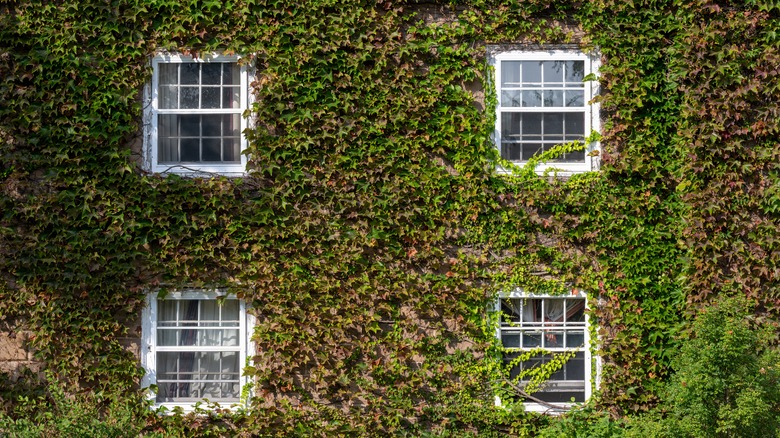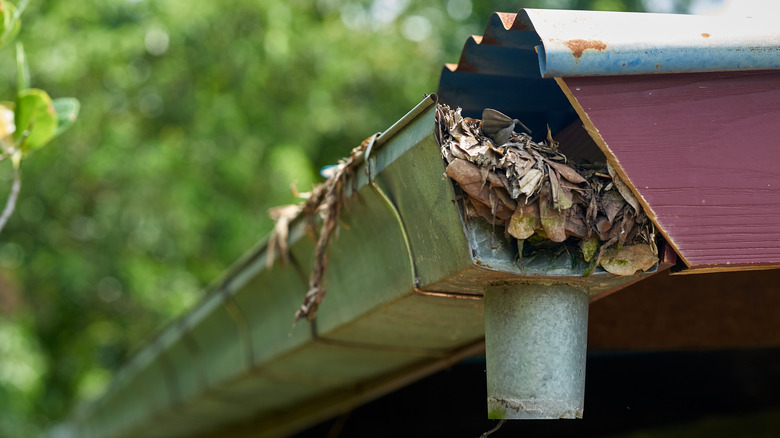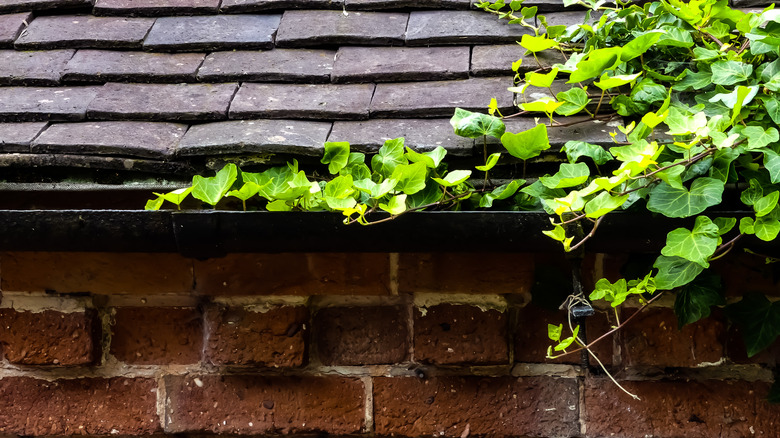Don't Make This Big Mistake When Growing Ivy On Your Home's Exterior
Growing ivy along your home's exterior can create a beautiful look. Its simple charm and natural aesthetic is nothing short of endearing, and it can be a source of pride for gardeners and those who love nature. However, there are some precautions you should take when growing ivy along the outside of your home. One of the most important things to remember is that letting the vine spread to the roof and gutters is a big mistake, causing blockages and rendering your gutters useless. While controlled ivy growth can be manageable, keeping it away from these areas is essential to keep your home in good shape.
To safely grow ivy up the walls of your home, there are a few things to know. First, avoid aggressive varieties like English ivy, especially on buildings with cracks, as their roots can worsen damage. Opt for gentler climbers like Boston ivy or Virginia creeper. In general, you want to make sure your home's outside surfaces are sturdy and free from cracks. Additionally, it's vital to regularly prune and not allow the vine to grow into windows, doors, and, of course, the gutters and roof.
What happens when ivy clogs gutters
When ivy gets in your gutters, it can spell disaster. Rainwater flows down your roof and into your gutters, which are designed to channel the water away from your house. However, when ivy finds its way into your gutter system, its leaves, along with any twigs or branches caught in the vine, can end up clogging your gutters. Neglecting to clean your gutters can cause more harm than you think. Over time, this buildup can completely block the flow of water, causing it to overflow.
When rainwater can't drain properly due to clogged gutters, it looks for other escape routes. This often leads to water seeping under your roof shingles, causing leaks and potential roof rot. The constant moisture exposure can weaken the structural integrity of your roof, leading to costly repairs down the line. Also, water overflowing from clogged gutters can pool around your foundation, putting immense pressure on the concrete or stone. This pressure can cause cracks and leaks in your basement, leading to water damage and potential structural issues.
Roof ivy can cause mold and damage shingles
In addition to clogged gutters, when ivy grows on your roof, it can create a breeding ground for moisture-related issues. The dense foliage often traps moisture between the vine and the house, creating a damp and humid environment. This enables mold and mildew growth, which can not only damage your roof but also pose health risks to your family.
The weight and growth of ivy vines can pose another threat to your roof. In some cases, the vines can actually lift or loosen shingles, making them more susceptible to wind damage. (English ivy, a notably invasive vine, has been known to do this.) Additionally, the roots of the vine can pry underneath the shingles, creating small gaps that allow water infiltration. This not only increases the risk of leaks but also exposes the underside of your roof to the elements, further accelerating its deterioration. In extreme cases, ivy can even grow into and eventually block a chimney. Of course, preventative measures are always the best when dealing with most home problems. So if you have ivy growing on your home's exterior, make sure to regularly trim the ivy away from your gutters and roof, ensuring it doesn't have the opportunity to climb or spread.


